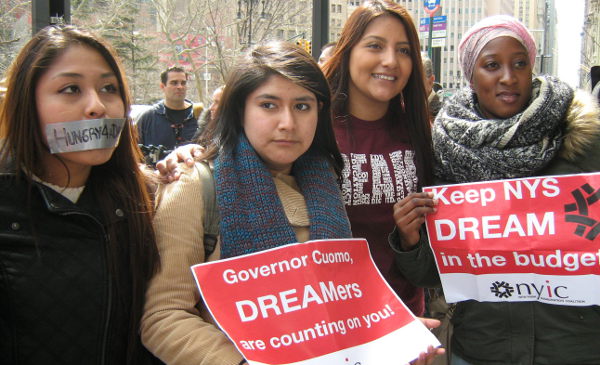Bipartisan Senate legislation unveiled on July 20 could, if enacted, grant legal permanent residence to as many as 1.5 million unauthorized immigrants brought to the United States as children, according to Migration Policy Institute (MPI) analysis of key provisions outlined by the measure’s authors, Sens. Lindsey Graham (R-SC) and Richard Durbin (D-IL).
A new fact sheet, Protecting the DREAM: The Potential Impact of Different Legislative Scenarios for Unauthorized Youth, examines the DREAM Act of 2017 proposed by Graham and Durbin as well as a House bill introduced in March by Rep. Carlos Curbelo (R-FL), the Recognizing America’s Children Act.
The fact sheet compares these two latest versions of the DREAM Act to the one that passed the House in 2010, offering estimates of who might qualify for initial conditional legal status as well as the subset who might fulfill the additional academic or professional requirements to obtain legal permanent residence later.
Using an innovative MPI methodology to assign legal status within Census Bureau data and to study attributes of the unauthorized, the researchers find that:
- 1.8 million people under the Senate bill and slightly more than 1 million under the Curbelo bill would be immediately eligible to earn conditional legal status because they already have the required high school education.
- Of those with conditional status, a smaller subset—1.5 million under the Senate bill and 938,000 under the pending House bill—would be likely to satisfy the college completion, military enlistment or other professional criteria to get legal permanent residence (aka a green card).
- While there is a maximum pool of 3.3 million unauthorized immigrants under the Senate legislation and 2.5 million under the House bill who meet the minimum age at arrival and years of U.S. residence threshold, in reality those who do not already have the required education are significantly unlikely to be able to re-enroll and thus qualify to apply for conditional status. The experience of the Deferred Action for Childhood Arrivals (DACA) program shows the limited ability of those without a high school degree to qualify for deportation relief by getting back into education because of limited English proficiency, high levels of poverty and family pressures.
The researchers suggest that given the significant overlap in qualifying criteria between the DACA program and the pending House and Senate bills, the vast majority of current DACA recipients would be able to apply for conditional status under either version





